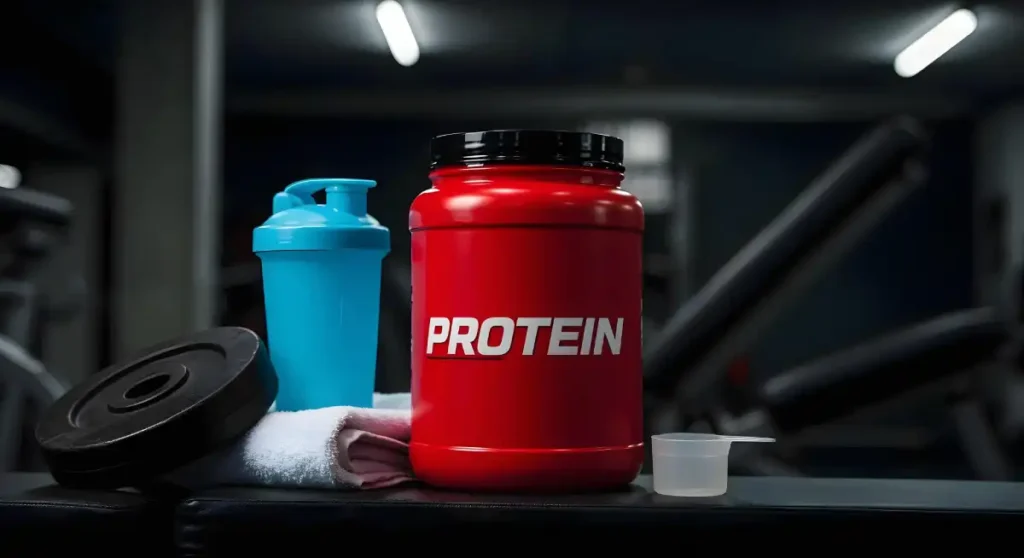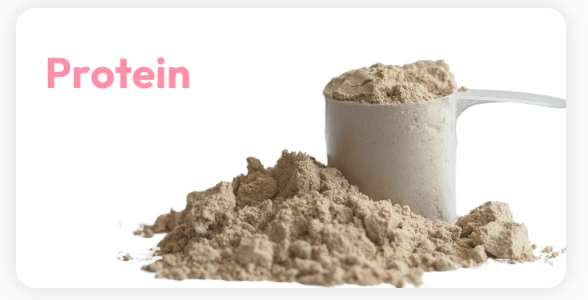Cheap Protein in India : 7 Hidden Dangers You Need to Know

Table of Contents
Introduction
Cheap Protein in India has become a booming trend, offering big promises at unbelievably low prices. But beneath the glossy packaging lies a silent threat to your health.
Imagine trusting your health to a supplement only to discover it’s filled with toxins instead of protein. This isn’t a far-fetched nightmare; it’s India’s new fitness reality.
In 2024, a shocking raid in Noida uncovered a factory producing counterfeit protein powders disguised as premium supplements. These spurious products weren’t just ineffective, they caused real harm. A Delhi resident reportedly suffered severe skin and liver damage after using one such fake protein product.1
And this isn’t an isolated incident. The Citizen Protein Project, a landmark study published in Medicine (2024), analyzed 36 popular protein supplements sold in India and found that 70% were mislabeled, and 14% contained toxins such as heavy metals.2

So, how are these protein powders made so cheaply?
And more importantly, if not protein, then what are you actually consuming?
Let’s uncover the 7 hidden dangers of cheap protein in India and how you can protect your health from deceptive supplements.
Hidden Danger #1: The Low-Grade Whey Trap
At the heart of many low-cost protein powders lies cheap, low-quality whey, the byproduct of industrial dairy processing.
To cut costs, manufacturers often use whey sourced from cows treated with hormones, antibiotics, and GMO feed. This whey is rarely tested or traceable, and much of it comes from unregulated suppliers or rejected export batches.
According to nutritional audits and import analyses, such low-grade whey may contain pesticides, antibiotics, and traces of heavy metals.3 Without transparent sourcing, you have no idea what’s in your scoop or what it could be doing to your body.
Why it matters:
Low-quality whey not only reduces the biological value of your protein but also increases your exposure to contaminants that accumulate over time, potentially harming your liver, kidneys, and gut health.
Hidden Danger #2: Amino Spiking – The Great Label Lie
When a protein label claims “24g protein per scoop,” you expect that to come from real protein.
But many cheap powders inflate their numbers through amino spiking, a deceptive trick where cheap amino acids like glycine or taurine are added to fake protein content during testing.
While these amino acids are harmless in isolation, they don’t help muscle recovery, repair, or growth like complete proteins do. Yet, lab tests still show a high protein number misleading you into paying for something that’s not truly protein.
This practice is technically legal, but ethically dubious. It’s one of the biggest scams in India’s supplement market.
Why it matters:
You’re paying premium prices for a formula that doesn’t deliver results, just inflated numbers. Long-term use also disrupts your amino acid balance, affecting recovery and muscle performance.
Hidden Danger #3: The Filler Factory – What’s Really in the Scoop
The cost of real protein is high. To keep prices low, manufacturers bulk up their powders with cheap fillers and artificial ingredients that add volume, sweetness, and texture but no nutrition.
Common culprits include:
- Maltodextrin: A high-glycemic filler that spikes blood sugar and adds empty calories.
- Artificial sweeteners: Linked to gut microbiome disruption and metabolic disorders.4
- Thickeners, gums, and anti-caking agents: Can cause bloating, inflammation, and poor nutrient absorption.5
- Unidentified bulking agents: As seen in the Noida case, some fillers have caused long-term liver and kidney damage.
Why it matters:
These additives may improve taste or mixability, but over time, they can harm your gut health, insulin response, and hormonal balance. For many users, digestive discomfort and acne are early warning signs.
Warning: Regular consumption of these additives may harm your gut health, metabolism, and disturb hormonal balance.
Hidden Danger #4: Clean Label, Dirty Reality
Ever wondered why so many cheap protein brands proudly display “lab tested” on their labels?
Here’s the uncomfortable truth: most send “clean” samples special, high-quality batches for testing, while selling an inferior version in the market.
This clean-sample scam misleads consumers into trusting unsafe products. By the time independent labs or regulatory agencies investigate, thousands of tubs have already been sold.
Recent Indian market audits have found huge discrepancies between tested samples and store-bought versions proof that label claims can’t always be trusted.
Why it matters:
Mislabeled supplements violate consumer trust and may contain toxic metals like lead, cadmium, and arsenic, which silently damage vital organs over time.6
Hidden Danger #6: The Regulatory Blind Spot
India’s supplement market has grown faster than its regulations. Many brands exploit loopholes in FSSAI and AYUSH labeling norms, registering as “nutraceuticals” instead of foods or drugs.
That means they face minimal pre-market scrutiny, allowing spurious or untested products to flood online and offline platforms.
Even reputable e-commerce sites sometimes list unverified or counterfeit supplements, especially during sales.
Why it matters:
With weak enforcement and fragmented regulation, consumers carry the risk. If a protein causes harm, there’s rarely accountability and by then, the damage is done.
Hidden Danger #7: The Real Cost – Your Health
Cheap protein doesn’t just underdeliver; it can quietly destroy your body’s balance.
When you consume low-grade, contaminated protein over time, you expose yourself to a cocktail of toxins, additives, and misleading claims.
Some common side effects reported by users include:
- Persistent bloating and fatigue
- Skin acne and inflammation
- Hormonal irregularities
- Poor recovery and muscle cramps
- Liver enzyme elevation
These aren’t just gym inconveniences, they’re signs of deeper metabolic distress.
Why it matters:
The short-term savings on cheap protein can turn into long-term medical expenses. Your body pays the price for every “discounted scoop.”
How to Spot Fake or Unsafe Protein Powder?
It is not just about getting “less protein” anymore. It’s about harming your health!
| How to Spot Fake or Unsafe Protein Powder: Check for: 1. Authorized certification and batch numbers 2. Professional packaging 3. Label accuracy 4. Manufacturer details, date, and expiry 5. Independent lab test results 6. Avoid “too good to be true” deals |
If you can’t verify what’s inside, don’t consume it. Your safety isn’t worth a discount.
Safer Alternatives: Real Food, Real Protein
We believe in a Food-first Approach. If you can’t verify what’s inside your protein powder or find it hard to invest in a premium protein, don’t risk your health with low-grade powders. Instead, choose real, protein-rich foods that are affordable and accessible.
Vegetarian Protein Sources
Sattu (roasted gram flour) – a traditional powerhouse that’s affordable and clean.
Sprouted moong – boosts digestibility and amino acid availability.
Chana, rajma, dal + rice or roti – complete protein combinations for daily meals.
Nuts and seeds – compact protein with healthy fats.
Besan chilla with curd – a balanced protein breakfast.
Homemade paneer – great if tolerated and sourced cleanly.
Non-Vegetarian Protein Sources
Eggs – complete protein with essential amino acids.
Country chicken – avoids antibiotic-loaded poultry.
Freshwater fish – rich in omega-3s and lean protein.
Bone broth – supports collagen, joint, and gut health.
Organ meats (from clean sources) – nutrient-dense and affordable.
These options are not only safe and traceable, but they also nourish your body in a holistic way, without artificial additives or hidden toxins.
Why Pink Tiger Stands Apart
At Pink Tiger -India’s most rigorous verification system, we prioritize your health with uncompromising standards.
We don’t just test protein powders. We interrogate them at each step, rigorously.
Step 1: Label Screening
We examine every ingredient for harmful additives, misleading claims, and unsafe substances.
Step 2: Independent Lab Testing
Products that clear Step 1 are tested in third-party labs for label accuracy, hidden toxins, and contaminants.
Step 3: Earning the Stamp
Only products that pass both stages earn the Pink Tiger stamp — a mark of uncompromised safety and transparency.
Step 4: Continuous Review
Verification isn’t a one-time promise it’s an ongoing commitment. We retest regularly, and if a product fails later, the stamp is revoked immediately.
Our mission is to empower you with truthful information so you can make safe and informed choices.
Every Pink Tiger verified protein is subjected to industry-leading, lab testing for purity, safety, and label accuracy setting a new benchmark for trust and transparency.
Explore Pink Tiger Verified Protein and choose what’s proven, not promised.

Final Thoughts
Cheap protein powders may seem tempting, but the hidden costs to your health are too high to ignore. Your body deserves clean, safe, and effective nutrition.
If you can’t trust what’s in your supplement, choose real food and demand better from the industry.
This is not just about protein. It’s about your right to safe, honest nutrition for yourself and India. #PickPink
Frequently Asked Questions (FAQs)
1. Why is cheap protein powder risky for health?
Cheap protein powders are often made using low-grade whey, fillers, and artificial ingredients to reduce cost. Many also contain heavy metals, toxins, and misleading labels, as found in recent Indian studies. These contaminants can harm your liver, kidneys, and gut, making such powders risky for long-term use.
2. What is amino spiking, and how does it fool consumers?
Amino spiking is a deceptive practice where manufacturers add cheap amino acids like glycine or taurine to artificially raise the protein count on lab tests. Although it inflates the label value, these amino acids don’t build muscle or aid recovery like complete proteins do, so you end up paying for numbers, not nutrition.
3. How can I identify fake or adulterated protein powder?
Look for batch numbers, certifications, ingredient transparency, and independent lab test reports on the label. Fake or unsafe powders often have vague claims, inconsistent packaging, and unrealistically low prices. Always purchase from verified sellers or Pink Tiger–verified brands that publish third-party test results.
4. Do all affordable protein powders contain toxins?
Not necessarily, but many cheap, unverified brands do. Studies like the Citizen Protein Project (2024) found toxins and mislabeling in over half of tested products. Some verified, clean brands offer safe and affordable options, but consumers must check for lab transparency before buying.
5. Can I meet my protein needs without supplements?
Yes. Whole foods like eggs, pulses, sattu, moong sprouts, paneer, and nuts can help meet your daily protein goals affordably. For those who train intensively, supplements can help, but only if they’re tested, certified, and transparent about their ingredients.
Disclaimer : This content is for informational purposes only and is not a substitute for professional medical advice, diagnosis, or treatment. Always consult a qualified healthcare provider for any questions or concerns regarding your health.
References:
1. Desk, T. L. (2024, December 15). Noida protein powder adulteration case: How to identify fake protein powder. The Times of India. https://timesofindia.indiatimes.com/life-style/food-news/noida-protein-powder-adulteration-case-how-to-identify-fake-protein-powder/articleshow/116256381.cms
2. Philips, C. A., Theruvath, A. H., Ravindran, R., & Chopra, P. (2024). Citizens protein project: A self-funded, transparent, and concerning report on analysis of popular protein supplements sold in the Indian market. Medicine, 103(14), e37724. https://doi.org/10.1097/md.0000000000037724
3. Bandara, S. B., Towle, K. M., & Monnot, A. D. (2020). A human health risk assessment of heavy metal ingestion among consumers of protein powder supplements. Toxicology Reports, 7, 1255–1262. https://doi.org/10.1016/j.toxrep.2020.08.001
4. Hetta, H. F., Sirag, N., Elfadil, H., Salama, A., Aljadrawi, S. F., Alfaifi, A. J., Alwabisi, A. N., AbuAlhasan, B. M., Alanazi, L. S., Aljohani, Y. A., Ramadan, Y. N., Ellah, N. H. A., & Algammal, A. M. (2025). Artificial Sweeteners: a Double-Edged Sword for gut microbiome. Diseases, 13(4), 115. https://doi.org/10.3390/diseases13040115
5. Zafar, M. I., Frese, M., & Mills, K. E. (2021). Chronic fructose substitution for glucose or sucrose in food or beverages and Metabolic Outcomes: An Updated Systematic Review and Meta-Analysis. Frontiers in Nutrition, 8. https://doi.org/10.3389/fnut.2021.647600
6. Desk, T. L. (2025, January 26). FDA issues highest risk level recall for over 6,000 tubs of protein powder. The Times of India. https://timesofindia.indiatimes.com/life-style/health-fitness/health-news/fda-issues-highest-risk-level-recall-for-over-6000-tubs-of-protein-powder/articleshow/117303835.cms